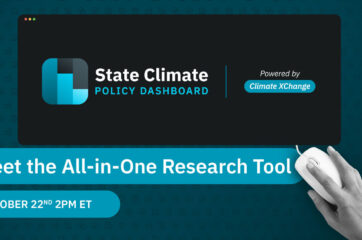California Gov. Newsom signs EO targeting economic impact of climate change – ESG Dive

California Executive Order on Climate Change: A Report on Alignment with Sustainable Development Goals
Executive Summary
An executive order signed by California Governor Gavin Newsom initiates a state-wide, multi-agency effort to address the escalating economic and social impacts of climate-driven disasters. The directive focuses on developing resilient infrastructure and financial systems, directly aligning with the United Nations’ Sustainable Development Goals (SDGs). The order builds upon recent legislation, including Senate Bill 254, to create a comprehensive framework for climate adaptation and mitigation.
Advancing Climate Action and Sustainable Energy (SDG 13 & SDG 7)
The executive order represents a critical measure in the state’s strategy to combat climate change and its impacts, a core objective of SDG 13 (Climate Action).
- The directive is a response to the growing frequency and scale of climate-related catastrophes, including wildfires, droughts, and severe storms.
- It complements a package of bipartisan bills aimed at slashing greenhouse gas emissions and accelerating the transition to a clean energy economy.
- These legislative efforts also seek to reduce electricity costs and stabilize the gas market, supporting the goals of SDG 7 (Affordable and Clean Energy).
- The order reinforces previous climate disclosure laws (SB 253 and SB 261), which mandate that large companies report on climate-related risks and emissions.
Building Resilient and Sustainable Communities (SDG 11 & SDG 1)
A primary focus of the order is to enhance community resilience and protect vulnerable populations, which is central to SDG 11 (Sustainable Cities and Communities) and SDG 1 (No Poverty).
- The directive aims to improve insurance availability and accessibility for residents in high-risk areas.
- It mandates measures to ensure fair allocation of recovery costs and provide monetary compensation for survivors of natural disasters.
- These actions are crucial in mitigating the severe economic consequences of climate events, such as the January wildfires which caused an estimated $250 billion in damages and at least 29 deaths, thereby preventing disaster-induced poverty.
Fostering Economic Stability and Innovation (SDG 8 & SDG 9)
The order addresses the significant economic threats posed by climate change, seeking to safeguard economic stability and promote innovation in line with SDG 8 (Decent Work and Economic Growth) and SDG 9 (Industry, Innovation, and Infrastructure).
- The initiative targets the mitigation of economic impacts on key sectors, including the insurance market and energy utilities.
- California has experienced at least 46 separate weather and climate disasters since 1980 that each caused losses exceeding $1 billion, highlighting the need for robust economic protection strategies.
- The order calls for state agencies to partner on research to develop innovative tools, solutions, and novel approaches for mitigating the risks associated with natural disasters.
Strengthening Institutions and Partnerships (SDG 16 & SDG 17)
The executive order establishes a “whole-of-government” response, mandating collaboration across multiple state bodies to create effective and accountable institutions, reflecting the principles of SDG 16 (Peace, Justice, and Strong Institutions) and SDG 17 (Partnerships for the Goals).
- The directive builds on the mandate of Senate Bill 254, which directs the state’s wildfire fund administrator to report on new approaches to climate disaster response.
- It requires the wildfire fund administrator to collaborate with a range of subject-matter experts from various state agencies.
- California Public Utilities Commission
- Office of Energy Infrastructure Safety
- Department of Insurance
- Office of Emergency Services
- Department of Forestry and Fire Protection
1. Which SDGs are addressed or connected to the issues highlighted in the article?
-
SDG 13: Climate Action
- The article is fundamentally about taking action against climate change and its impacts. It details California’s response to “climate-driven disasters” and efforts to “slash greenhouse gas emissions.” The executive order aims to accelerate the state’s “response to climate-fueled insurance crisis,” directly aligning with the core objective of SDG 13.
-
SDG 11: Sustainable Cities and Communities
- The article focuses on the impact of climate disasters, like wildfires, on communities. It discusses measures to protect residents through improved insurance, monetary compensation for “wildfire survivors,” and safeguarding “ratepayers from paying utility liability costs.” This connects to making human settlements resilient and safe.
-
SDG 7: Affordable and Clean Energy
- The article mentions a package of bills signed by Governor Newsom that “aim to reduce electricity costs for California residents” and “help the state transition to a clean energy economy.” This directly addresses the goals of ensuring access to affordable, reliable, and sustainable energy.
-
SDG 8: Decent Work and Economic Growth
- The central theme of the executive order is mitigating the “economic impact” of climate disasters on key sectors like the “insurance market and the energy utility sector.” The article highlights the significant economic toll, noting fires “caused over $250 billion in damages and economic loss,” making economic resilience a key focus.
2. What specific targets under those SDGs can be identified based on the article’s content?
-
Under SDG 13 (Climate Action)
- Target 13.1: Strengthen resilience and adaptive capacity to climate-related hazards and natural disasters. The executive order is explicitly “geared toward accelerating the state’s response to climate-driven disasters” and developing “tools and solutions to help the state better mitigate the risk associated with natural disasters.”
- Target 13.2: Integrate climate change measures into national policies, strategies and planning. The article describes a “whole-of-government response,” including an executive order and multiple pieces of legislation (SB 254, SB 219, SB 253, SB 261), which demonstrates the integration of climate measures into state-level policy and planning.
-
Under SDG 11 (Sustainable Cities and Communities)
- Target 11.5: By 2030, significantly reduce the number of deaths and the number of people affected and substantially decrease the direct economic losses… caused by disasters. The article directly references the impacts the state is trying to reduce, citing “at least 29 deaths” and “$250 billion in damages and economic loss” from wildfires. The order seeks to “fairly allocate the costs of recovering” and provide “monetary compensation for wildlife survivors.”
-
Under SDG 7 (Affordable and Clean Energy)
- Target 7.2: By 2030, increase substantially the share of renewable energy in the global energy mix. This is implied by the legislative package that aims to “help the state transition to a clean energy economy.”
3. Are there any indicators mentioned or implied in the article that can be used to measure progress towards the identified targets?
-
Indicators for Target 11.5 (Reduce disaster losses)
- Economic Loss from Disasters: The article provides specific figures that serve as a baseline and a metric for this indicator, such as the January fires causing “over $250 billion in damages and economic loss” and the state experiencing “at least 46 weather or climate disaster events that spurred losses exceeding $1 billion each” between 1980-2024.
- Mortality Rate from Disasters: The article mentions “at least 29 deaths” from the wildfires, which is a direct measure for this indicator.
-
Indicators for Target 13.2 (Integrate climate policies)
- Number of countries/states with climate strategies: The existence of the executive order and bills like SB 254 and the climate disclosure laws (SB 253, SB 261) serve as a qualitative indicator that California has adopted and is implementing integrated policies and plans for climate change adaptation and mitigation.
-
Indicators for Climate Action and Clean Energy (SDG 13 & 7)
- Greenhouse Gas Emissions: The goal to “slash greenhouse gas emissions” is mentioned, implying that the volume of emissions is a key indicator being tracked. Furthermore, the climate disclosure laws (SB 253 and SB 261) mandate that large companies report on their “emissions,” creating a formal data source for this indicator.
4. Create a table with three columns titled ‘SDGs, Targets and Indicators” to present the findings from analyzing the article.
| SDGs | Targets | Indicators |
|---|---|---|
| SDG 13: Climate Action |
13.1: Strengthen resilience and adaptive capacity to climate-related hazards.
13.2: Integrate climate change measures into policies and planning. |
– Adoption of disaster risk reduction strategies (e.g., the executive order, SB 254). – Mandated corporate disclosure of climate risks and emissions (SB 253, SB 261). – Total greenhouse gas emissions (implied by the goal to “slash” them). |
| SDG 11: Sustainable Cities and Communities | 11.5: Significantly reduce deaths and economic losses from disasters. |
– Number of deaths attributed to disasters (mentioned as “at least 29 deaths”). – Direct economic loss from disasters (mentioned as “$250 billion in damages” and “events that spurred losses exceeding $1 billion each”). |
| SDG 7: Affordable and Clean Energy | 7.2: Increase the share of renewable energy. |
– Progress towards a “transition to a clean energy economy” (mentioned as a policy goal). – Reduction in electricity costs (mentioned as a goal of legislation). |
Source: esgdive.com

What is Your Reaction?
 Like
0
Like
0
 Dislike
0
Dislike
0
 Love
0
Love
0
 Funny
0
Funny
0
 Angry
0
Angry
0
 Sad
0
Sad
0
 Wow
0
Wow
0



















































.jpg.webp?itok=0ZsAnae9#)

























